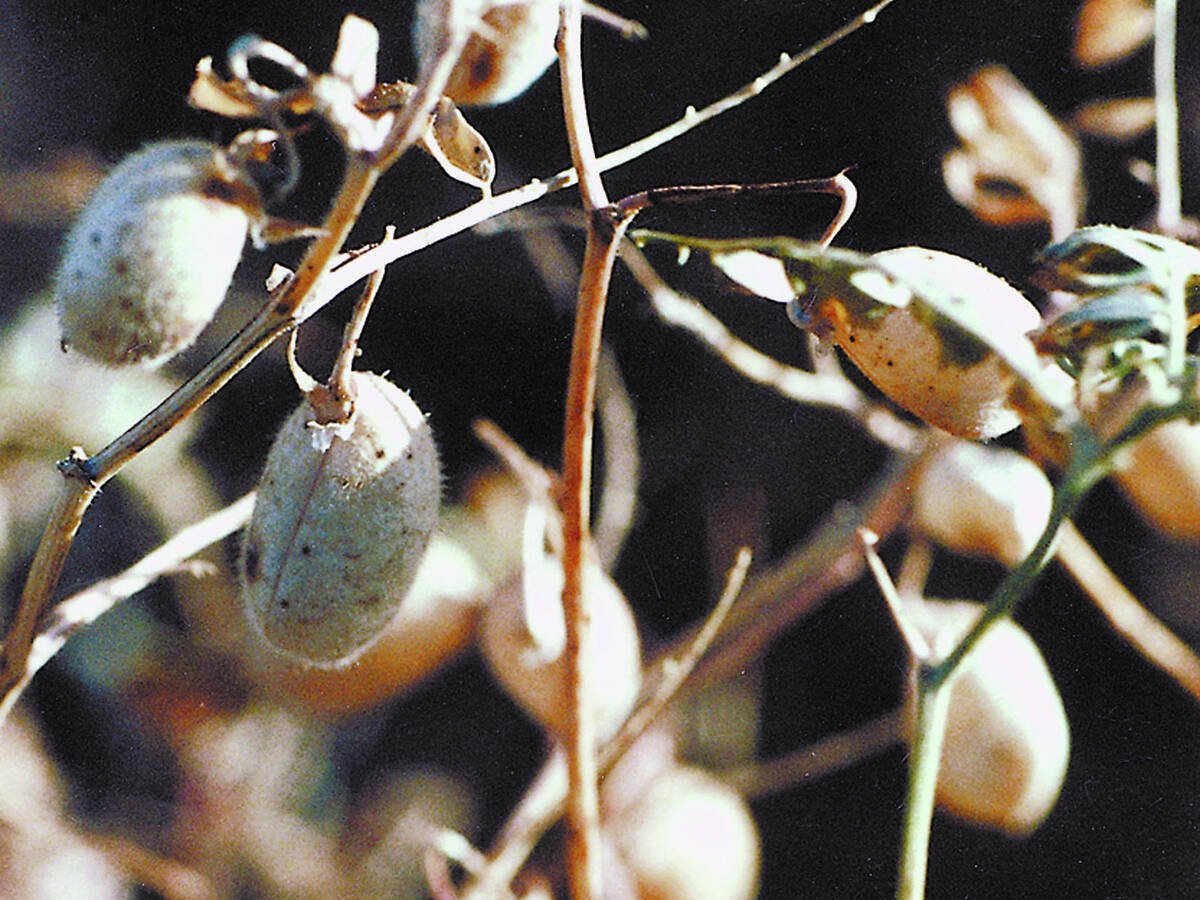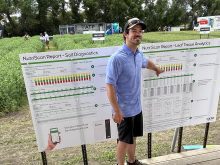Glacier FarmMedia – What if the sulphur fertilizer you’ve been using isn’t disappearing from your soil as quickly as you think?
As Daniel Kaiser, an associate professor and extension specialist in the department of soil, water and climate at the University of Minnesota, told farmers at the 2025 CropConnect conference in Winnipeg in February, research is shedding new light on how sulphur interacts with the soil.
While his work focused on Minnesota, it may have spillover implications for Canadian farmers. Sulphur is considered the third most limiting nutrient on the Canadian Prairies, and canola is highly sensitive to sulphur deficiency, the Canola Council of Canada says.
Read Also

Chickpea harvest forecasts see big disparity
Chuck Penner is forecasting 345,000 tonnes of chickpeas but a trader thinks the real number is closer to 500,000 tonnes.
Kaiser has been studying sulphur use and performance in his state for the past two decades.
“During that time, we’ve seen a fourfold increase in the sales of sulphur, and a lot of that is ammonium sulphate,” Kaiser says.
Misconceptions about sulphur availability
While much of this increase in sulphur use can be attributed to the growing production of sulphur-hungry crops such as corn, Kaiser suggests part of the rise may be due to misconceptions at the farm level.
However, because research shows negative ions, such as the sulphate in ammonium sulphate, tend to leach through soils that usually hold a positive charge, many farmers assume they need to reapply sulphur each year, thinking last year’s application has moved below the root zone.
“I don’t think that’s the case,” Kaiser says. “In terms of the reactions with some of the other elements of the soil, particularly in soils that have a lot of calcium, it hangs around a lot longer than we think it does.”
In response to this perceived leaching issue, some farmers turn to elemental sulphur, but Kaiser says there’s a potential drawback to this strategy. Elemental sulphur needs to be converted into plant-available sulphate by soil microbes — a process that doesn’t kick in effectively until soil temperatures hit 32 C.
“That’s a lot higher than what it’s going to be most of the time in the soils, particularly early in the growing season,” Kaiser says.
Sulphur sources
Kaiser outlined several sulphur fertilizer options.
Sulphate-based fertilizers, such as ammonium sulphate, potassium sulphate, calcium sulphate (gypsum) and Micronized Sulfur Technology (MST), provide sulphur in the sulphate (SO4) form, which is immediately available to plants. These fertilizers are typically the most effective for addressing sulphur needs during the growing season. In terms of sulphur response, all sulphate-source fertilizers tend to act similarly.
As pointed out above, elemental sulphur must undergo the slow process of microbial conversion into sulphate, making it a slow-release fertilizer. Because MST also contains elemental sulphur, it straddles both categories, so it has quick and slow-release properties.
Thiosulphate (S2O3) is another option. Although, like elemental sulphur, it also needs to be converted by soil microbes into sulphate, thiosulphate behaves more like a sulphate fertilizer in terms of plant response. It tends to be faster-acting than elemental sulphur and can provide sulphur to plants in a timeframe similar to that of sulphate-based fertilizers.

For the purposes of his research, Kaiser used mainly potassium sulphate for his sulphate-based fertilizer. For elemental sulphur, he mainly used Tiger 90, a granular product that’s 90 per cent elemental sulphur mixed with bentonite.
Carryover confidence
Kaiser’s research on sulphur use in rotations backs up his suggestion that sulphur leaching may not be as big a concern as some farmers think. He’s been tracking sulphur responses across various crop rotations.
He found sulphur applied in one year can carry over to benefit subsequent crops, even when no sulphur is applied the following season. For example, in a corn-soybean rotation, yields were higher in the second and third years when sulphur had been applied to the previous corn crop, even though no additional sulphur was applied to the soybeans. Kaiser says he’s collected extensive data from sites across Minnesota, all showing sulphur doesn’t leach out of the soil profile between seasons.
“This speaks to that carryover effect,” Kaiser says. “While sulphur is an ion and technically susceptible to leaching, we’ve seen time and again that it stays in the soil and is available for crops in subsequent years. So, I’m not concerned about leaching in these systems.”
Issues with elemental sulphur
Another study Kaiser conducted across several Minnesota sites provides insights into how different sulphur sources perform under various conditions. For instance, the Tiger 90 consistently lagged behind the sulphate sources such as MST and potassium sulphate.
At one site near Waseca in south-central Minnesota, the Tiger 90 showed little to no availability of sulphur in the first year — and even in the second year, its sulphur availability was only about half that of MST or sulphate fertilizers.
This slower release of sulphur from Tiger 90 underscores an important point: while it can be a good long-term investment, growers are unlikely to see a return on investment in the year it’s applied.
For farmers who need quicker results, MST or sulphate-based fertilizers may be a better choice in the short term.
















